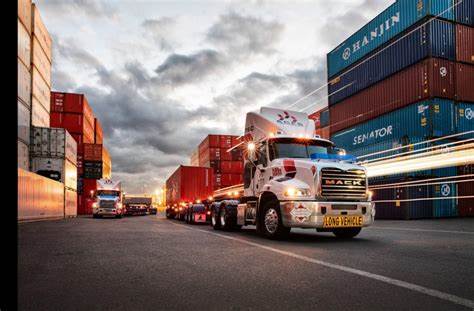
When it comes to shipping your goods, selecting the right freight mode is a critical decision. With various freight companies in Melbourne to choose from, it can be challenging to determine which mode of transportation is best suited for your shipments. Whether you’re shipping domestically or internationally, choosing the right freight mode is essential to ensure your cargo arrives safely and on time.
In this blog post, we’ll discuss the different modes of transportation available and help you understand how to choose the right freight mode for your shipments.
Freight Modes of Transportation
There are several modes of transportation to consider when shipping your goods with a freight company in Melbourne. Each has advantages and disadvantages, so selecting the one that best suits your specific needs is essential.
Road Transportation
Road transportation is the most common mode of transportation and is suitable for short and long distances. It involves using trucks or other vehicles to transport goods on highways and roads. Road transportation is often the most cost-effective option for small shipments and offers flexibility regarding pick-up and delivery times. However, it’s not ideal for large, heavy shipments or shipments that travel long distances.
Rail Transportation
Rail transportation is ideal for shipping large, heavy goods over long distances. It involves the use of trains to transport goods on rail lines. Rail transportation is also a cost-effective option, especially for businesses shipping goods in bulk. However, it’s not as flexible as road transportation, and businesses may need to use additional modes of transportation to get the goods to their final destination.
Air Transportation
Air transportation is the quickest mode of transportation and is ideal for urgent or time-sensitive shipments. It involves the use of aeroplanes to transport goods in the cargo hold. Air transportation is also suitable for shipping high-value or perishable goods. However, it’s the most expensive mode of transportation and may not be cost-effective for all shipments.
Sea Transportation
Sea transportation is usually the slowest but ideal for shipping large quantities of goods over long distances. It involves using ships to transport goods on oceans or other large bodies of water. Sea transportation is also the most cost-effective option for businesses shipping goods in bulk. However, it’s not suitable for time-sensitive shipments, and businesses may need to use additional modes of transportation to get the goods to their final destination.
Factors to Consider When Choosing the Right Freight Mode
Now that you’re familiar with the different modes of transportation offered by freight companies in Melbourne, let’s discuss the critical factors to consider when choosing the right freight mode for your shipments.
Cost
Cost is a critical factor to consider when choosing the right freight mode. Different modes of transportation have varying costs, and businesses must consider their budget when selecting the right mode. While air transportation may be faster, it is often more expensive than other modes of transportation. Sea transportation, on the other hand, is slower but can be more cost-effective for larger shipments.
Time
If the shipment is time-sensitive and needs to be delivered quickly, air transportation may be the best option. Air transportation is typically the fastest and can deliver goods to almost any location in the world within a short timeframe. However, air transportation is often more expensive than other modes of transportation, so businesses need to consider the cost of the shipment against the urgency of the delivery.
Distance
Distance is another crucial factor to consider when selecting the right freight mode. The distance between the point of origin and the destination can impact the freight mode choice. For example, if the shipment travels a short distance, road transportation may be the most efficient and cost-effective option. On the other hand, if the shipment travels a long distance, sea or air transportation may be more suitable. Sea transportation is slower but can be more cost-effective for longer distances, while air transportation is faster but more expensive.
Size and Weight
The size and weight of the shipment can also impact the choice of your freight mode and freight company in Melbourne. For example, large and heavy shipments may require rail or sea transportation, while smaller shipments can be transported via road or air. Businesses must consider the size and weight of their shipment when selecting the right freight mode to ensure that their goods can be transported safely and efficiently.
Type of Goods
The type of goods being shipped can also impact the choice of freight mode. For example, fragile or perishable goods, such as refrigerated trucks or air transportation, may require special handling and transportation. Hazardous materials also require specialised handling and transportation, and not all modes of transportation may be suitable. When choosing the correct freight mode, businesses must consider the type of goods being shipped and ensure that the chosen mode of transportation can accommodate their specific requirements.
Transit Time
Transit time refers to the time it takes for goods to be delivered from the point of origin to the destination. This time can vary significantly depending on the mode of transportation used. For example, air transportation is typically the fastest, while sea transportation is the slowest. When choosing the right freight mode, it’s essential to consider the transit time required for the shipment and whether it aligns with the business’s timeline.
Final Words
Ultimately, selecting the right freight mode and partnering with a reliable freight company like Green Earth Logistics can help businesses enhance their operations, reduce costs, and improve customer satisfaction. It’s essential to take the time to assess the different options available and choose the best fit for each specific shipment’s requirements. With the right strategy and partner, businesses can achieve their logistics goals and drive success for their organisation.








